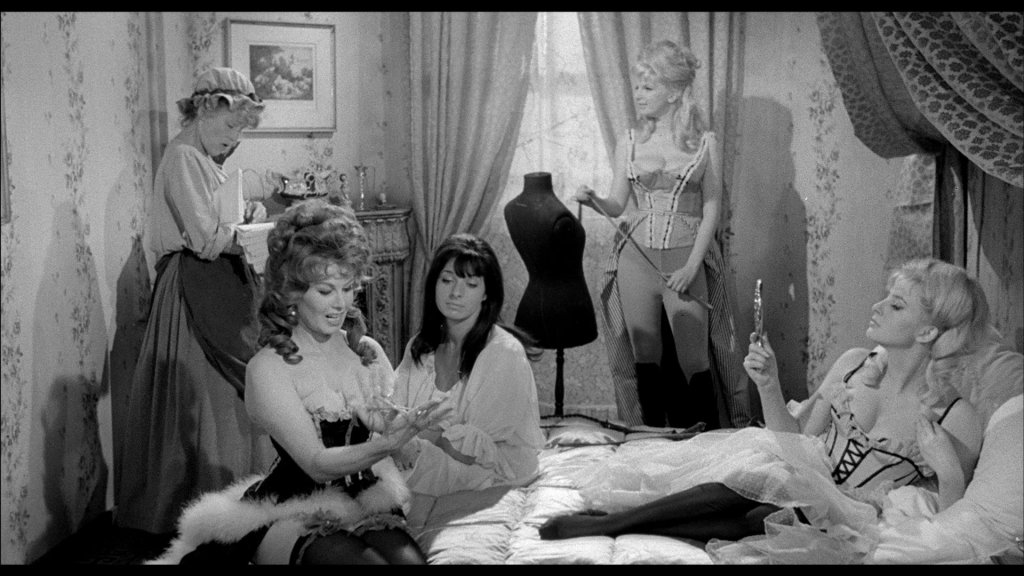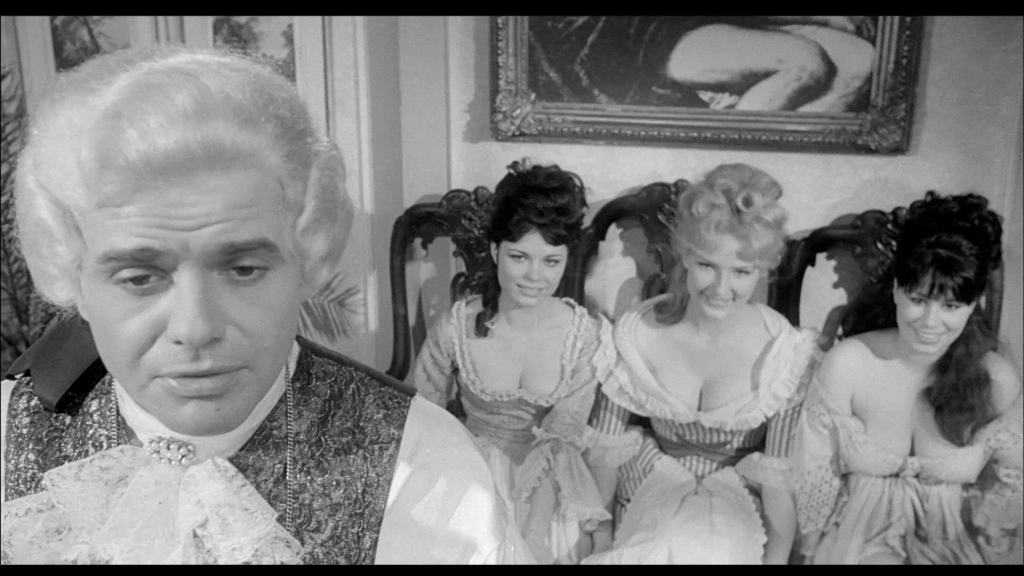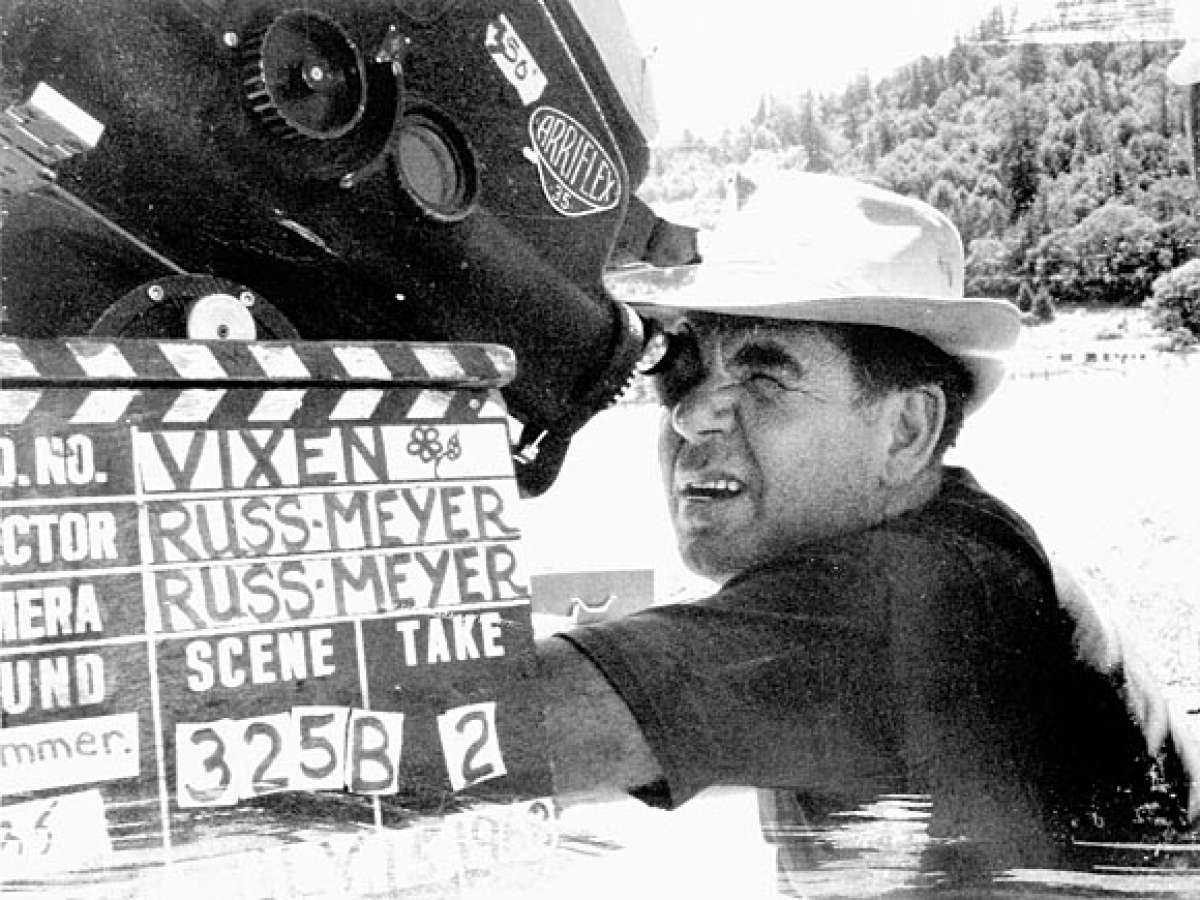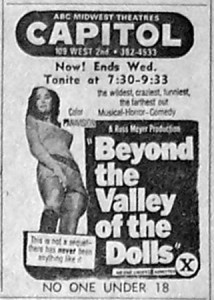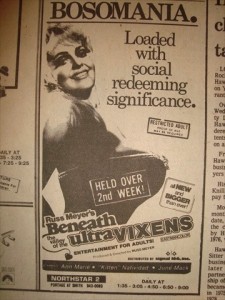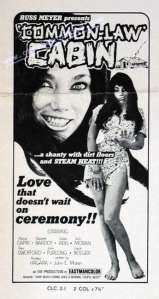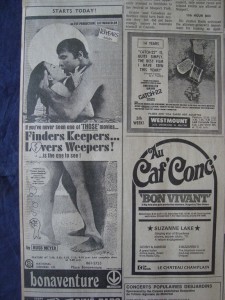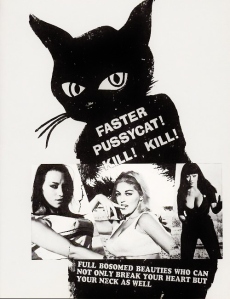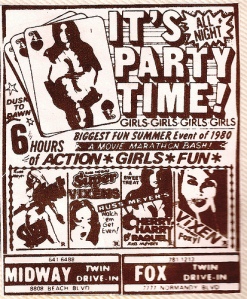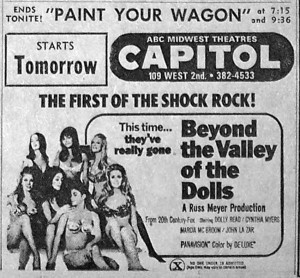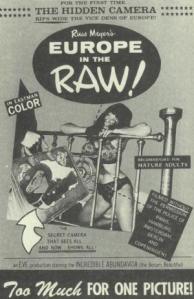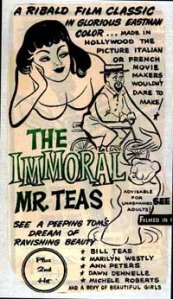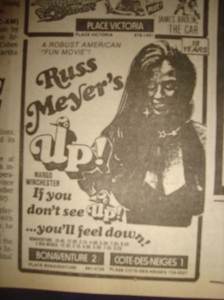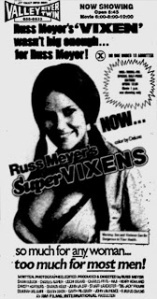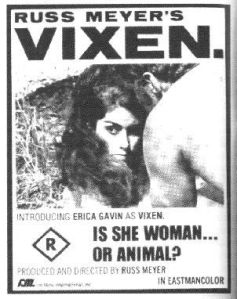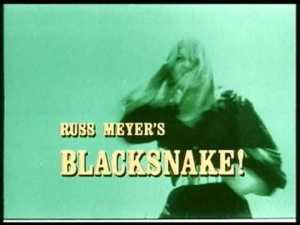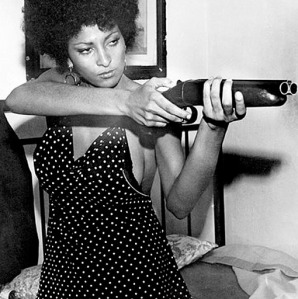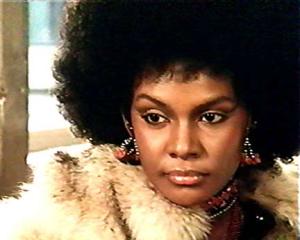It is by mere coincidence that, in another series of career overviews of filmmakers who have meant a great deal to me over the years, I recently watched and wrote about L.A. Takedown, Michael Mann’s 1989 made-for-television movie that was his first attempt to bring his screenplay for Heat to general audiences. In that piece, I opined how much of a bummer it was for Mann to have to compromise his beautifully written script into such a trifle of a film. It’s a fine thing on its own but once you see Heat, you see what he really wanted to do with the material and L.A. Takedown can’t help but look flaccid in comparison.
And so we come, quite fortuitously, to the point in Russ Meyer’s career that we should be discussing 1964’s Fanny Hill, the Albert Zugsmith-produced adaptation of John Cleland’s erotic novel from 1748. While it’s much less a personal loss of content and vision than what Mann faced, the disparity between the Meyer film, the first attempt at bringing Fanny Hill to the screen, and the novel is so stark that it’s almost embarrassing that a rough-hewed man’s man like Meyer would create such a puffy piece of cute nonsense out of a book that would make even the most degenerate of high seas pirates blush. Little wonder that an artistically frustrated Meyer took to the streets and freeballed Europe in the Raw directly after production wrapped which allowed him some personal liberty that had all been constricted on Fanny Hill’s production, not unlike one of the 18th century corsets worn by the lasses in that film.
Dispensing with the book’s fuller and more rounded view of the titular character’s sexual maturation through experience, Meyer’s Fanny Hill is delivered as the slightest of farcical comedies with just enough peripheral décolletage and naughty double entendres to make it feel like adult fare. In it, our fresh-faced and virginal heroine (Leticia Roman) finds herself penniless on the streets of London and wanders into the clutches of Mrs. Maude Brown (Miriam Hopkins), a randy old madame of questionable moral character who runs a brothel in the city. Though her naïveté causes her to never quite understand where she’s working or what she’s doing, she nonetheless stumbles into love with a sailor in Her Majesty’s Navy (future hack director and Fassbinder protege, Ulli Lommel) whose sexual cluelessness matches hers and this union threatens to upend Mrs. Brown’s profitable find in Fanny.
This is all very cute and mildly saucy but it all feels more beholden to Zugsmith than it does to Meyer’s inner muse, which would no doubt lead to some more hot-blooded romping instead of perpetuating the elaborate cinematic cock tease presented here. There are a couple of Meyer gags like the fish in the cleavage bit, and during the more animated moments, the film has a slapstick style of frenetic editing that somewhat resembles Meyer but only if he were getting over the flu or some other ailment. For even when its trying, it feels a little slack compared to his other works. And unlike other outré movies in Meyer’s filmography like Blacksnake and The Seven Minutes, Fanny Hill doesn’t have a whole lot to say beyond the obvious, and the usual themes found in his work get utterly muted in favour of the one joke Fanny Hill has at its disposal that it never tires of retelling during the duration of its unjustifiable 104 minute running time.
But where it goes really wrong is that, while Lommel’s Charles is a typical wet mop of a Meyer hero, the character of Fanny Hill is neither confident nor does she employ any agency whatsoever. Her madcap exploits in which she has no clue of the copious humping materializing around her grows tiresome and literally nobody that would have been familiar with the novel or with Meyer’s penchant for crafting bawdy cinema could have been pleased with the end result at the time.
Still, this film has undeniable charm thanks in large part due to Miriam Hopkins’s performance. As the wickedly amoral and conniving Mrs. Brown, Hopkins elevates the whole affair from anemic to astounding each and every time she’s occupying the screen. Sometimes the antics have the same kind of breezy fun found in a Benny Hill episode and count me as an admirer of the illustrated, woodcut-inspired wipes and the cheap-john sets that look like they were stolen from a soap opera. And Meyer DOES seem to ignite some kind of visual tension in putting Leticia Roman in the position of being the film’s innocent center that is always on the verge of being overwhelmed by the leering buxom women that are festooning the four corners of the frame.
Also causing a bit of actual frustration is simply how amazing the Blu ray from Vinegar Syndrome looks. Paired with Albert Zugsmith’s stupid The Phantom Gunslinger, Fanny Hill’s announcement was a pleasant surprise as it had become increasingly difficult to track down over the years. The release from Vinegar Syndrome reveals itself to be, like Fanny herself, an unwitting tease as we can witness just what incredible work they do which brings about a sadness in knowing that they will never be able to do with the rest of his non-studio catalogue as they have with Fanny Hill. It’s a weird film to use as a flex but thus is the paradox of the Russ Meyer filmography in the world of physical media.
In the end, Fanny Hill is a crisp, cheaply financed romp that illustrates how well Meyer could shoot in black and white and was simultaneously an unpleasant experience that would inform Meyer’s feelings about producers not named Russ Meyer for a good long while. While it’s far from Meyer’s best, it is still uniquely appealing. For when compared to the raw downers and the moralistic doom to come in the Gothic films, Fanny Hill is as light as a feather as the most airy of the nudie cuties; a truly transitional film that displays the sharp, high contrast photography that would reign supreme in his next set of pictures. Though Tinto Brass’s excellent 1991 film, Paprika, is arguably the most full-blooded adaptation of Fanny Hill, Russ Meyer’s stab at the material is as charming as it is inconsequential.
(C) Copyright 2022, Patrick Crain
Patrick Crain is a freelance writer and film programmer for the Oklahoma Film Society. He spends his days in semi-retirement by pacing around his home in Oklahoma City, watching movies, writing about them, and then pouring wine for both he and his wife at around 4:30CST. His scribblings about the motion pictures can be found at www.apollotwin.com. He can be found on Instagram here and on Twitter here. He is also on Letterboxd.

